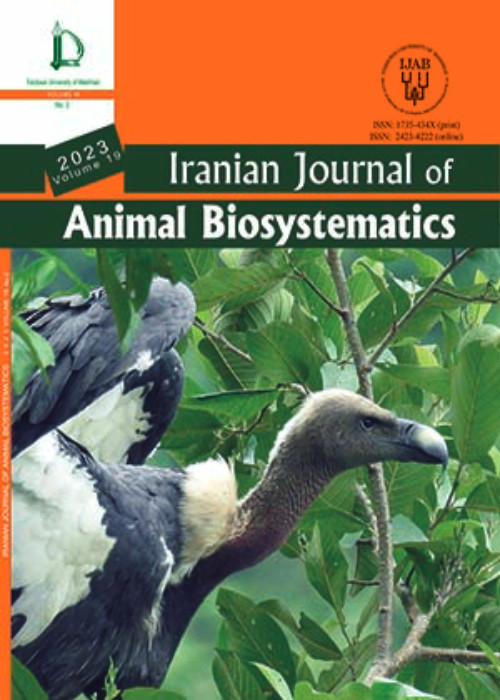Assessment of Population Status and Diurnal Behaviour of White-rumped Vulture (Gyps bengalensis) in Ghachowk, Kaski, Nepal
Author(s):
Article Type:
Research/Original Article (دارای رتبه معتبر)
Abstract:
Vulture Safe Feeding Sites (VSFS) provide diclofenac-free food and create an ideal environment for long-term ecological research on vultures. This study determines the population status and investigates the diurnal behavior White-rumped Vulture (Gyps bengalensis) at the Ghachowk VSFS in Kaski, Nepal. We deployed the absolute count method to determine population of White-rumped Vulture (Gyps bengalensis), while scan sampling was applied to investigate their diurnal behaviour. The observed population of Gyps bengalensis ranged from 34 to 65 individuals (with an average of 50±10, based on a sample size of 9). Throughout the daytime, a total of 1651 instances of 11 distinct activities were recorded for the species in 729 separate observations. The most frequent daytime behaviour observed was perching (28%) followed by preening (14%), basking (13%), scratching (13%) flapping (10%), flying (9%) and disturbance (7%). Other behaviors, like feeding, sleeping (roosting), fighting (competition), and bathing, were observed less frequently (<2% each). Perching occurred most frequently during heavy rain, accounting for 66% of the observations, and in the late afternoon, representing 36% of the instances. Basking was most commonly observed during partly sunny conditions, comprising 26% of the observations, and in the noon hours, representing 20% of the instances. Scratching behavior was most frequently observed during clear weather, accounting for 16% of the observations, and during cloudy conditions and in the morning, accounting for 14% of the instances. In the Ghachowk VSFS, other associated species with White-rumped Vulture were Red-headed Vulture Sarcogyps calvus, Egyptian Vulture Neophron percnopterus, and Slender-billed Vulture Gyps tenuirostris. This study plays a pivotal role in uncovering the conservation requirements especially in reducing social taboos of the tradition communities regarding this critically endangered species which needs strong social support for its long-term conservation.
Language:
English
Published:
Iranian journal of animal biosystematics, Volume:19 Issue: 2, Summer-Autumn 2023
Pages:
103 to 113
https://magiran.com/p2681972
دانلود و مطالعه متن این مقاله با یکی از روشهای زیر امکان پذیر است:
اشتراک شخصی
با عضویت و پرداخت آنلاین حق اشتراک یکساله به مبلغ 1,390,000ريال میتوانید 70 عنوان مطلب دانلود کنید!
اشتراک سازمانی
به کتابخانه دانشگاه یا محل کار خود پیشنهاد کنید تا اشتراک سازمانی این پایگاه را برای دسترسی نامحدود همه کاربران به متن مطالب تهیه نمایند!
توجه!
- حق عضویت دریافتی صرف حمایت از نشریات عضو و نگهداری، تکمیل و توسعه مگیران میشود.
- پرداخت حق اشتراک و دانلود مقالات اجازه بازنشر آن در سایر رسانههای چاپی و دیجیتال را به کاربر نمیدهد.
In order to view content subscription is required
Personal subscription
Subscribe magiran.com for 70 € euros via PayPal and download 70 articles during a year.
Organization subscription
Please contact us to subscribe your university or library for unlimited access!


